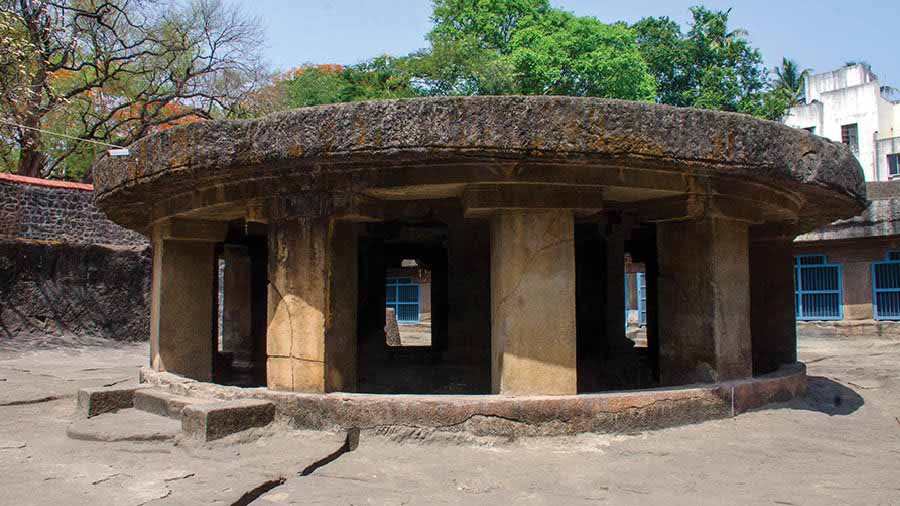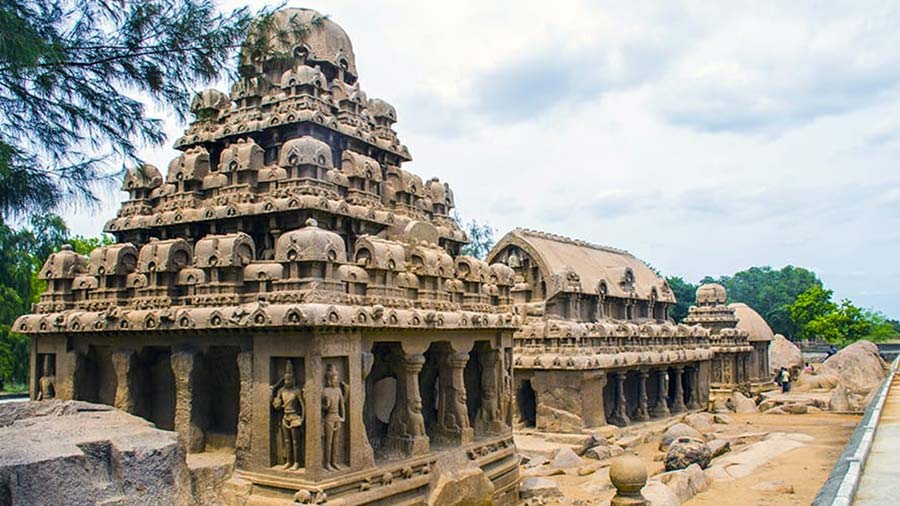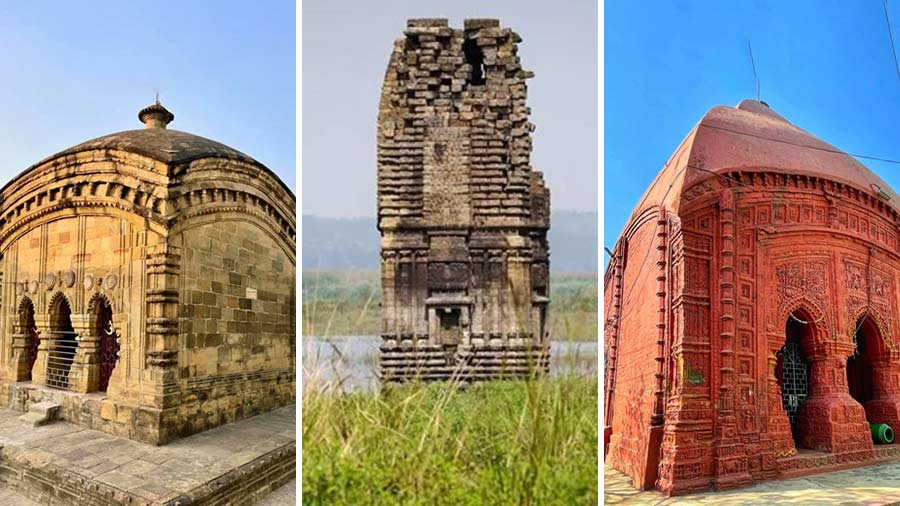Pune, popular as a cantonment town with a rich array of educational institutions, is often hailed as the education capital of India. Unknown to many, the city also harbours a significant historical site nestled in its core. The Pataleshwar Cave, situated on Jangli Maharaj Road (commonly known as JM Road), traces its origins back to the 8th century CE. Constructed by the Rashtrakuta dynasty (753 – 982 CE), this cave stands as a testament to Pune’s historical legacy and is likely the oldest surviving structure in the city.
Carved out of sheer basalt rock, the Pataleshwar Cave is a subterranean marvel, owing its name to its location below ground level. While reminiscent of the Elephanta Caves, it may lack the same grandeur and intricate detailing. Nonetheless, the Pataleshwar Cave offers a fascinating glimpse into Pune’s ancient past, adding a unique dimension to the city’s cultural and historical narrative.
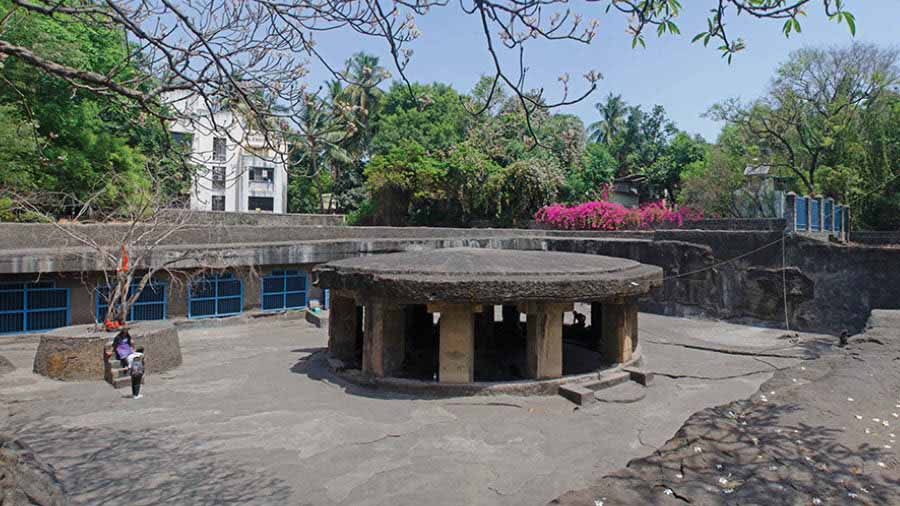
The circular Nandi Mandap with the pillared hall complex on the left
The entrance, conveniently situated adjacent to the Jangli Maharaj Temple, guides visitors into a spacious area adorned with ample shade from towering trees, creating an ideal setting for a winter picnic. Towards the rear of this expansive locale, a staircase descends to the rock-cut caves of Pataleshwar, adding an intriguing dimension to the surroundings. The entire structure is cut out of a hill, which is considered as a part of the Deccan Trapa, a large igneous province of west-central India.
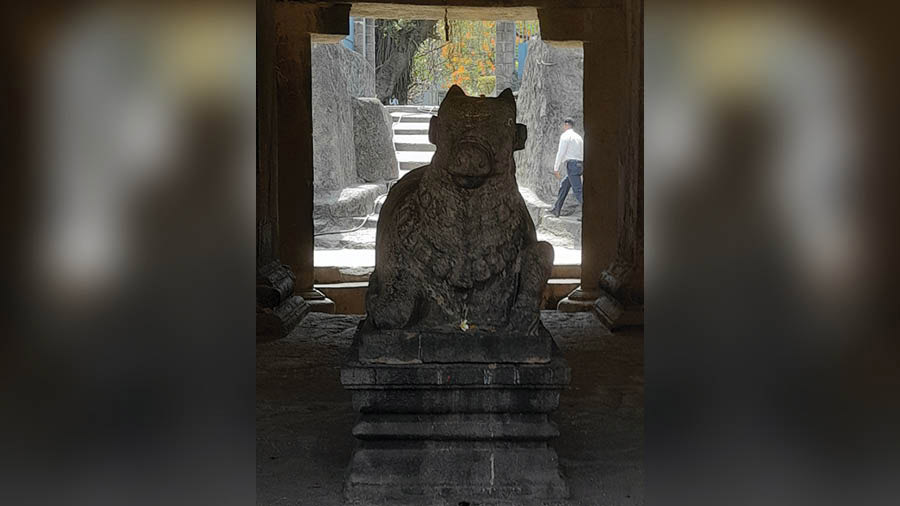
The Nandi bull beneath the circular pavilion
The central circular platform, functioning as a Nandi mandap, takes centre stage. This mandap, supported by a total of 16 pillars, features four pillars within and the remaining 12 along its circumference. Notably, four pillars on the eastern side have undergone restoration due to collapse. Adorning the pavilion is the ornate statue of the Nandi bull, facing the pillared hall situated to the west.
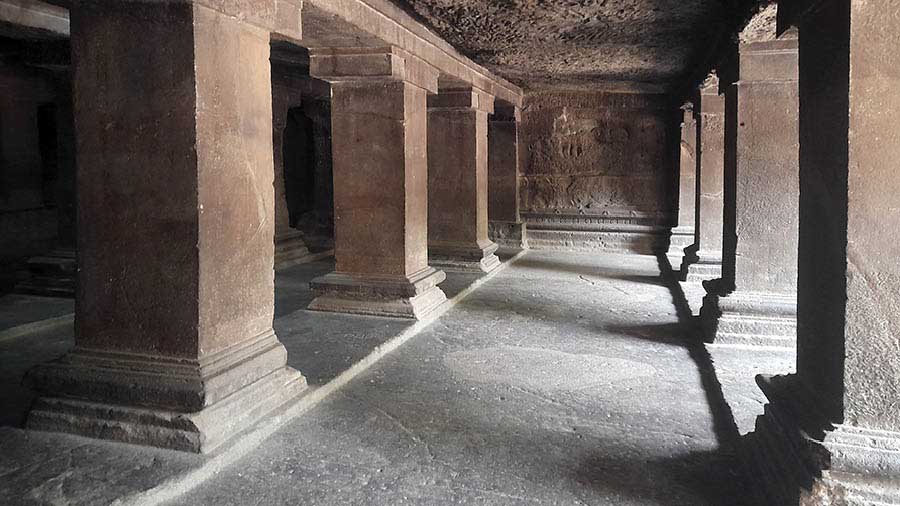
The pillared complex of Pataleshwar Cave
The pillared hall, characterised by a substantial open space, is upheld by a series of sturdy pillars, leading towards the inner sanctums. A parikrama path encircles the three inner sanctums, enabling devotees to circumambulate around them.
The walls of the temple bear stone relief works in various stages of completion, lending an intriguing aspect to its overall appearance. Notably, the temple appears to be in an unfinished state. Whether the challenging nature of the hard basalt stone hindered the carving process or if natural fault lines made the structure unsafe remains a mystery. While the reasons for its incomplete status may never be fully known, the cave continues to serve as an active place of worship, drawing both devotees and tourists alike.

Semi-finished relief work inside the pillared complex
The three inner sanctums, originally housing the idols of Shiva, Vishnu, and Brahma, have witnessed a transformation over time. Unfortunately, the original statues are lost to history, replaced by Shiva linga, Parvati, and Ganesha statues. A small Nandi bull statue stands before the central shrine, adding to the cave’s sacred ambiance. Additionally, several newly added statues grace the cave, including three marble depictions of Ram, Lakshman and Sita.

Newly installed marble statues of Ram, Lakshman and Sita inside the Pataleshwar Cave
So, next time you visit Pune, do visit this oldest standing structure of the city. It is quite conveniently located and would barely take half an hour to explore.
Travel information:
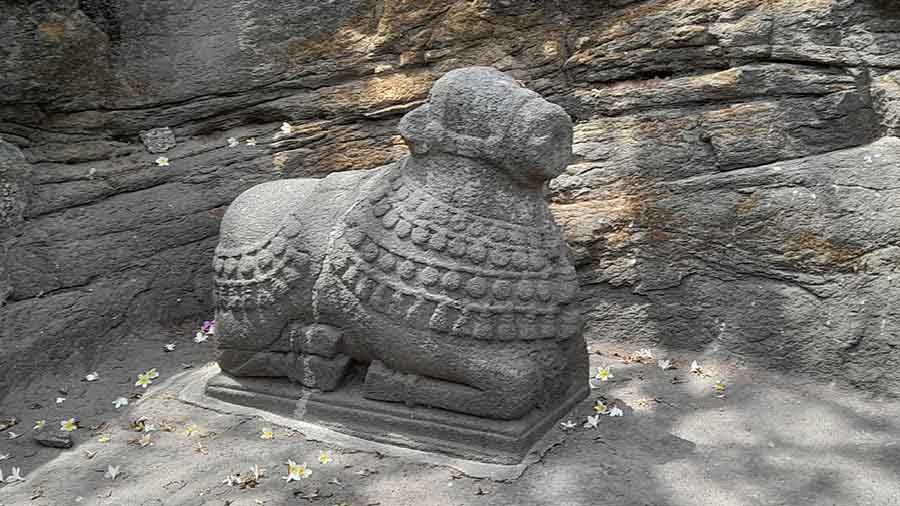
Another Nandi bull statue inside the cave complex
- Timing: 8.00 am – 5.30 pm
- Entry fee: Free
- Photography: Camera photography not allowed but mobile photography is allowed
